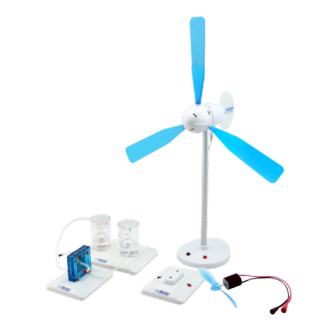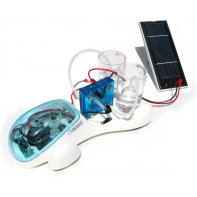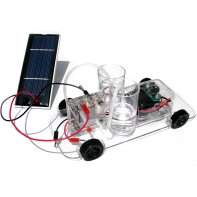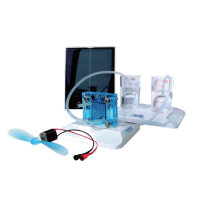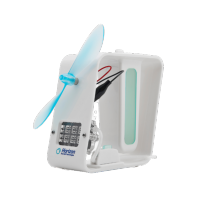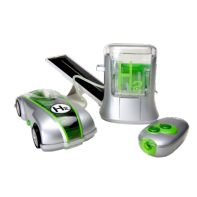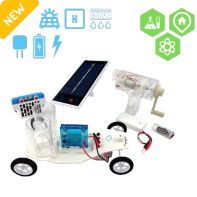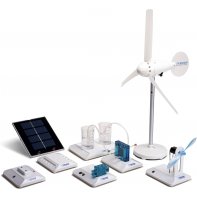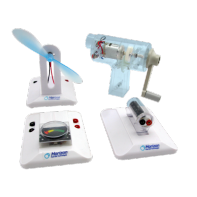- Home >
- Educational Robots >
- Horizon Science kits > Horizon Wind to Hydrogen Science Educational Kit
Horizon Wind to Hydrogen Science Educational Kit
The Wind to Hydrogen educational kit enables pupils to invent their own clean energy applications using a small electric motor powered by a fuel cell. Hydrogen is produced by electrolysis of water via a reversible PEM fuel cell, which is in turn powered by a wind turbine with streamlined blades based on NASA aeronautics.
Students can use physics concepts such as angular velocity and drag force to design and build an efficient wind turbine.
Horizon Wind to Hydrogen Science educational kit
The Wind to Hydrogen educational kit enables pupils to invent their own clean energy applications using a small electric motor powered by a fuel cell. Hydrogen is produced by the electrolysis of water using a reversible PEM fuel cell, which in turn is powered by a wind turbine with streamlined blades based on NASA aeronautics. This hydrogen is then converted into electrical energy by the fuel cell and can be used to power a small fan.
This kit offers a comprehensive exploration of stoichiometry, reaction rates and other chemistry concepts in generating hydrogen from wind energy. Students can use physics concepts such as angular velocity and drag force to design and build an efficient wind turbine. This is a practical and engaging introduction to the principles of renewable microgrids.
- Enables the creation of clean energy applications
- Hydrogen production by electrolysis of water using a reversible PEM fuel cell
- Wind turbine with profiled blades based on NASA aeronautics
- Converting hydrogen into electrical energy to power a fan
- Exploration of chemistry and physics concepts
- Engaging hands-on activities
- Compatible with other Horizon kits for measurement experiments and data logging
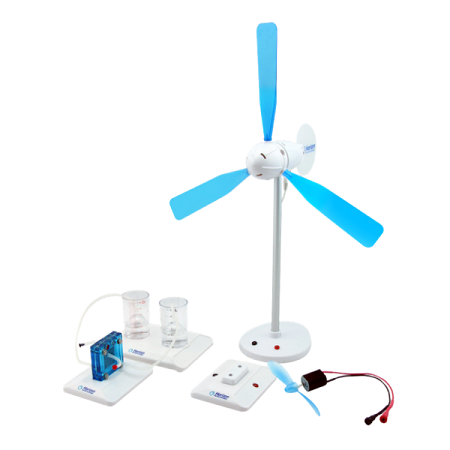
Features of the Horizon Wind to Hydrogen Science kit
Concepts Covered :
- Chemistry: Electrolysis, Energy, Hydrogen Generation, Reaction Rates, Reactions
- Physics: Angular velocity, Classical mechanics, Efficiency, Energy, Ohm's law, Electrical power, Rotational mechanics
- Earth Sciences: Renewable energy
Materials supplied :
- Wind energy kit (FCJJ-39)
- LED module
- Reversible PEM fuel cell module
- Water/gas storage tank module
- Tubes, connecting wires and accessories
- Motor with fan propeller
- 9 profiled wind turbine blades (3 sets of 3 types)
- Assembly guide
- Renewable energy curriculum CD
Horizon's Wind to Hydrogen Science Kit is a comprehensive educational tool that allows students to discover the principles of clean energy technologies using hands-on, engaging methods. It provides an excellent introduction to chemistry and physics concepts while allowing students to create and test their own renewable energy applications.
- Wind energy kit (FCJJ-39)
- LED module
- Reversible PEM fuel cell module
- Water/gas storage tank module
- Tubes, connecting wires and accessories
- Motor with fan propeller
- 9 profiled wind turbine blades (3 sets of 3 types)
- Assembly guide
- Renewable energy curriculum CD



